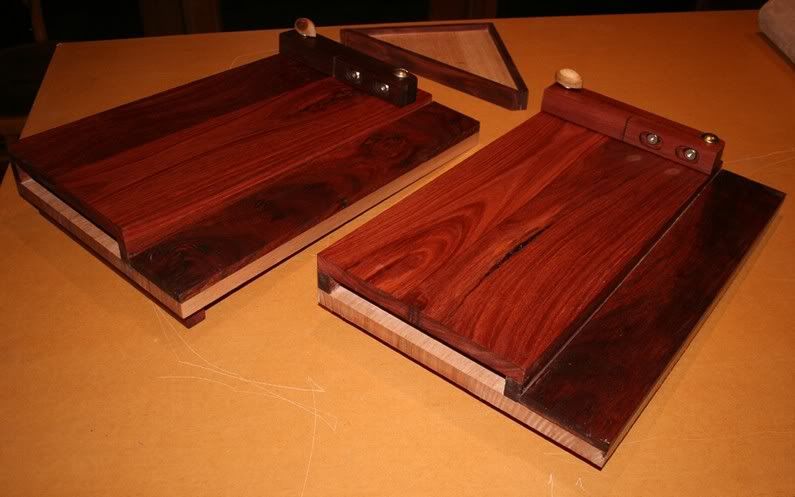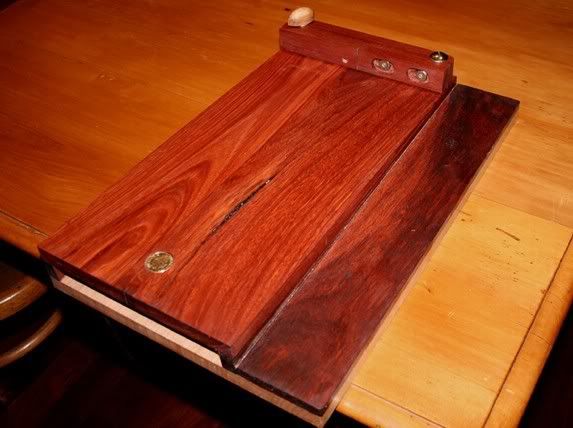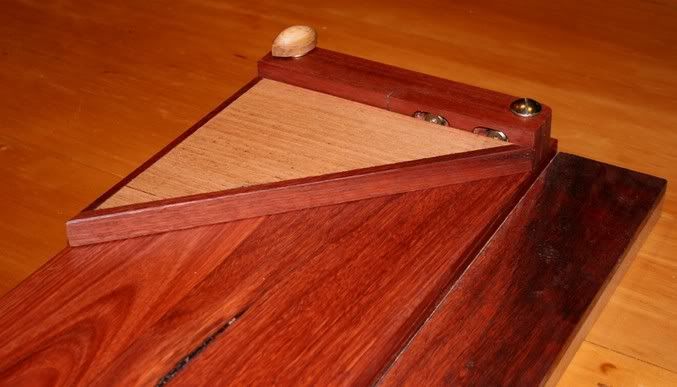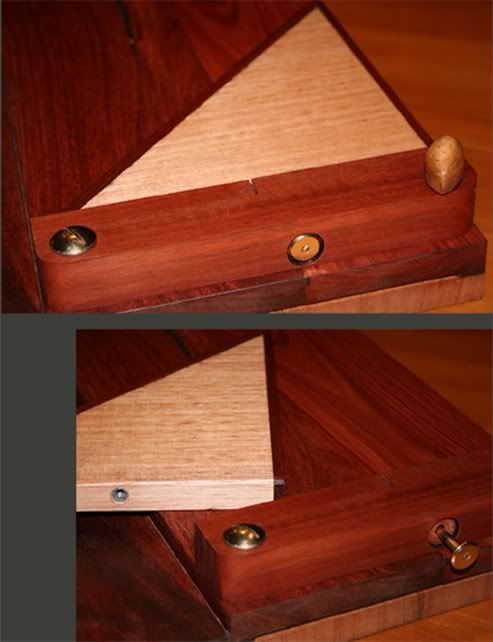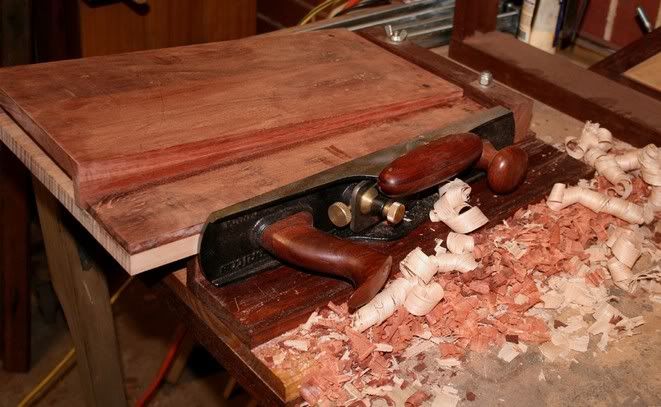Now that I'm asking shooting board related questions, let me ask one more:
"What's the advantage of a ramped shooting board?"
The only advantage I see is that the whole plane blade might be used instead of just the lower part of the plane blade. But how much of an advantage is that? On a ramped shooting board you risk having the end of the board closest to you being so high so that the plane won't cut the top of it (for a thick board).
All comments welcome.
Mike





 Reply With Quote
Reply With Quote



 Jr.
Jr. 

